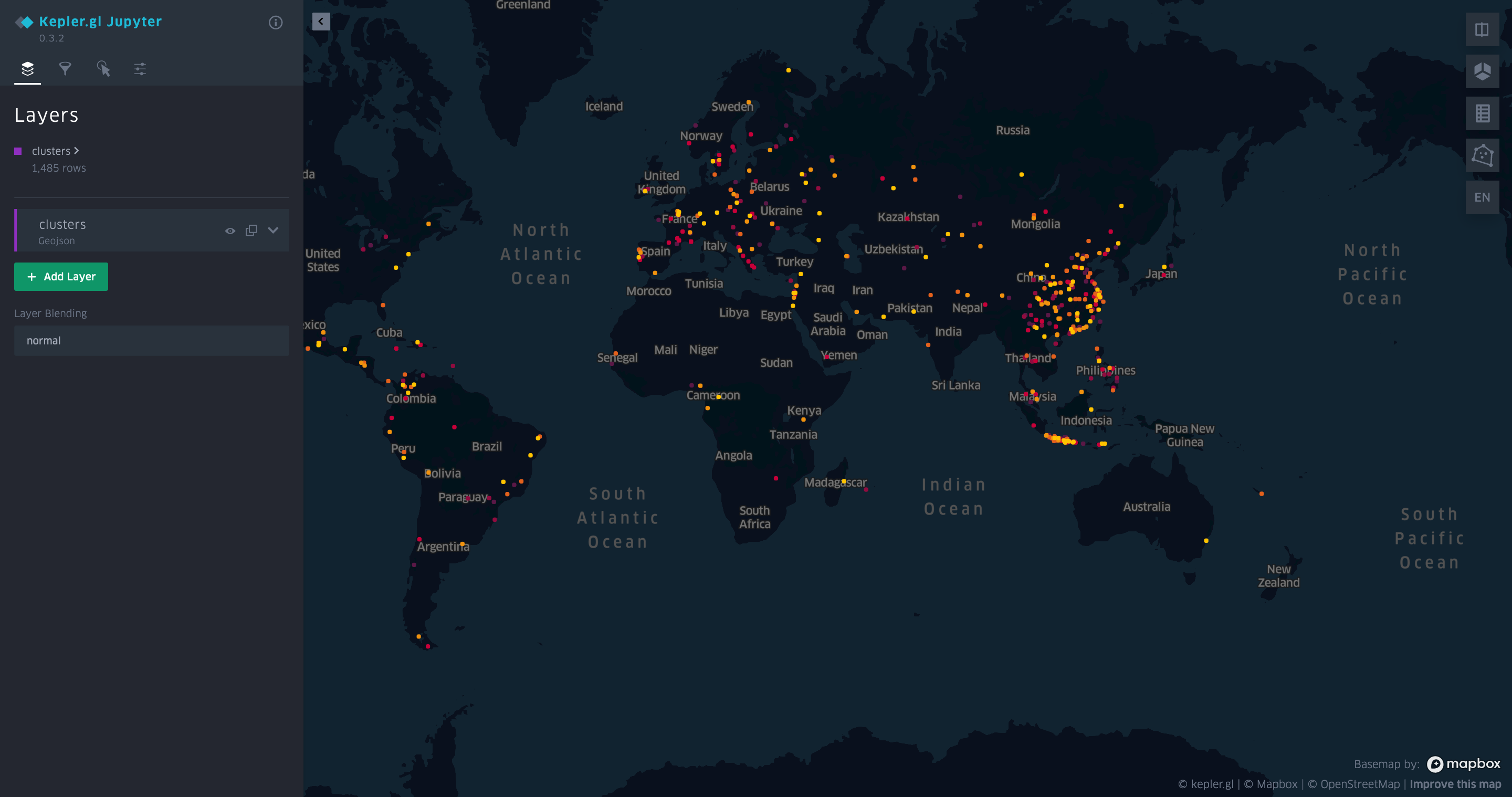📍 command-line tool for clustering geolocations.
Project description
geoclustering
📍 command-line tool for clustering geolocations.
Features
- Uses DBSCAN or OPTICS to perform clustering.
- Outputs clustering results as
json,txtandgeojson. - Creates a kepler.gl visualization of clusters.
Clustering Method
A cluster is created when a certain number of points (=> --size) each are within a given distance (=> --distance) of at least one other point in the cluster.
Install
Clone the repository:
git clone https://github.com/bellingcat/geoclustering
cd geoclustering
Install keplergl build dependencies:
# macos
brew install proj gdal
Install project with pip:
pip install .
Usage
Usage: geoclustering [OPTIONS] FILENAME
Options:
-d, --distance FLOAT (in km) Max. distance between two points in
a cluster. [required]
-s, --size INTEGER Min. number of points in a cluster.
[required]
-o, --output PATH Output directory for results. Default:
./output
-a, --algorithm [dbscan|optics]
Clustering algorithm to be used. `optics`
produces tighter clusters but is slower.
Default: dbscan
--help Show this message and exit.
Input
Inputs are supplied as a .csv file. The only required fields are lat and lon, all other fields are reflected to the output.
id,name,lat,lon
1,Bonnibelle Mathwen,40.1324085,64.4911086
...
Output
If at least one cluster was found, the tool outputs a folder with json, geojson, text and a kepler.gl html files.
JSON
Encodes an array of clusters, each containing an array of points.
[
{
"cluster_id": 0,
"points": [
{
"id": 9,
"name": "Rosanna Foggo",
"lat": -6.2074293,
"lon": 106.8915948
}
]
}
]
GeoJSON
Encodes a single FeatureCollection, containing all points as Feature objects.
{
"type": "FeatureCollection",
"features": [
{
"type": "Feature",
"geometry": {
"type": "Point",
"coordinates": [
106.891595,
-6.207429
]
},
"properties": {
"id": 9,
"name": "Rosanna Foggo",
"cluster_id": 0
}
}
]
}
txt
Encodes cluster as blocks separated by a newline, where each line in a cluster block contains one point.
Cluster 0
id 9, name Rosanna Foggo, lat -6.2074293, lon 106.8915948
// ...
kepler.gl
Project details
Download files
Download the file for your platform. If you're not sure which to choose, learn more about installing packages.
Source Distribution
Built Distribution
Hashes for geoclustering-0.1.1-py3-none-any.whl
| Algorithm | Hash digest | |
|---|---|---|
| SHA256 | 9918ae865fd92abb1b47641050876acf57c64d4d6e32b8ed2f6aedb6982d5bfa |
|
| MD5 | 400981dc091bca142a1614da30cde26f |
|
| BLAKE2b-256 | 377b326373bf7bf69dde9aee2e1635ab774e52d012dd5740fe26cd83fb5364bd |












